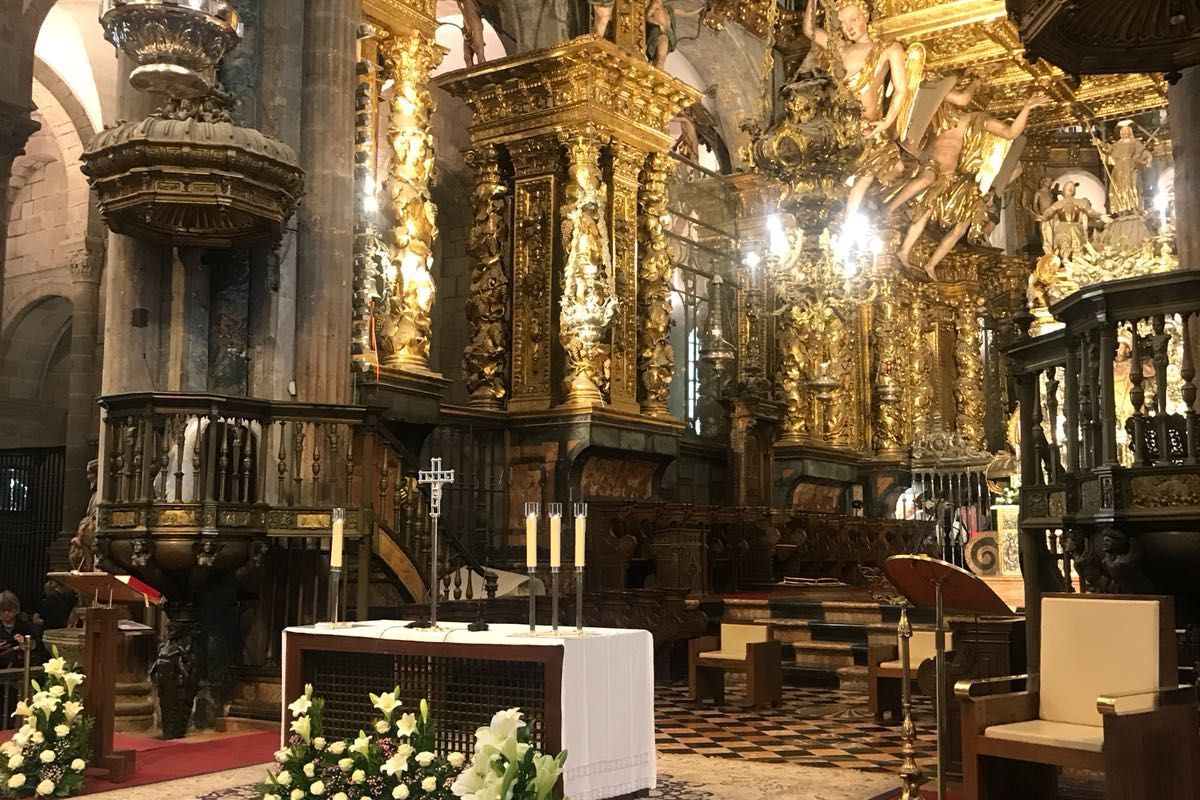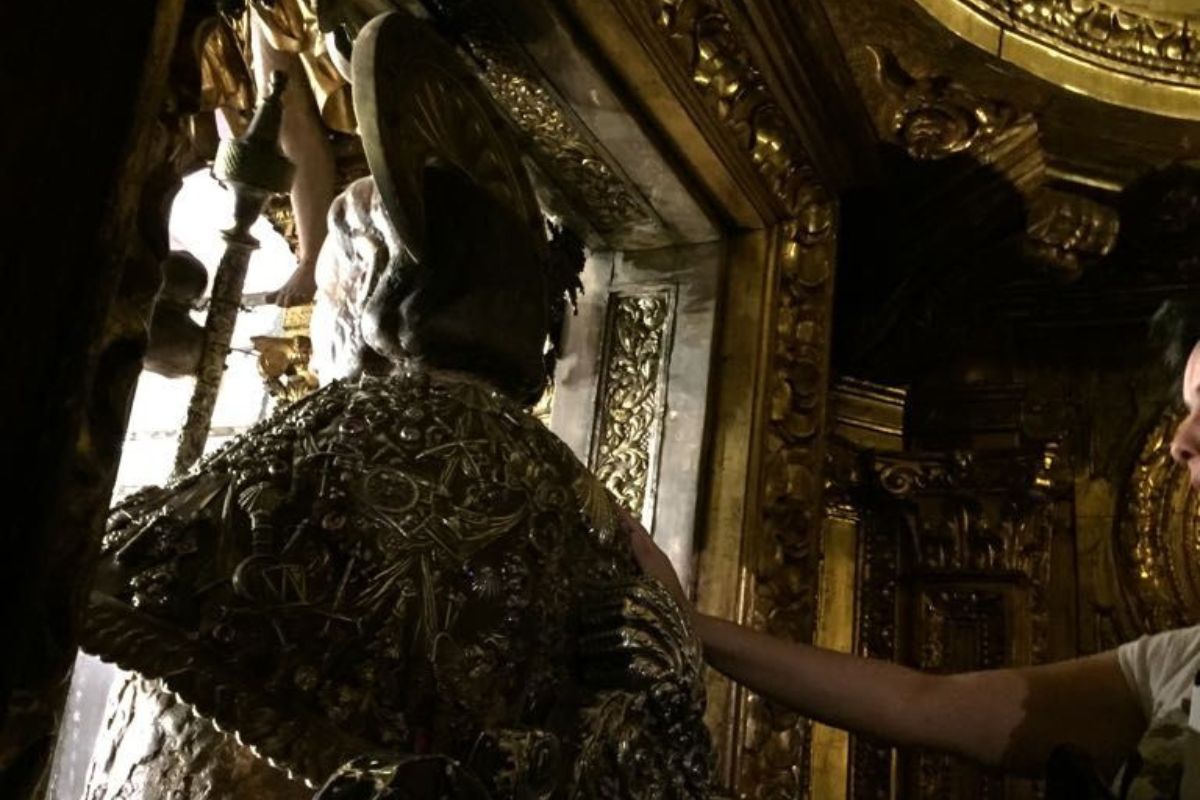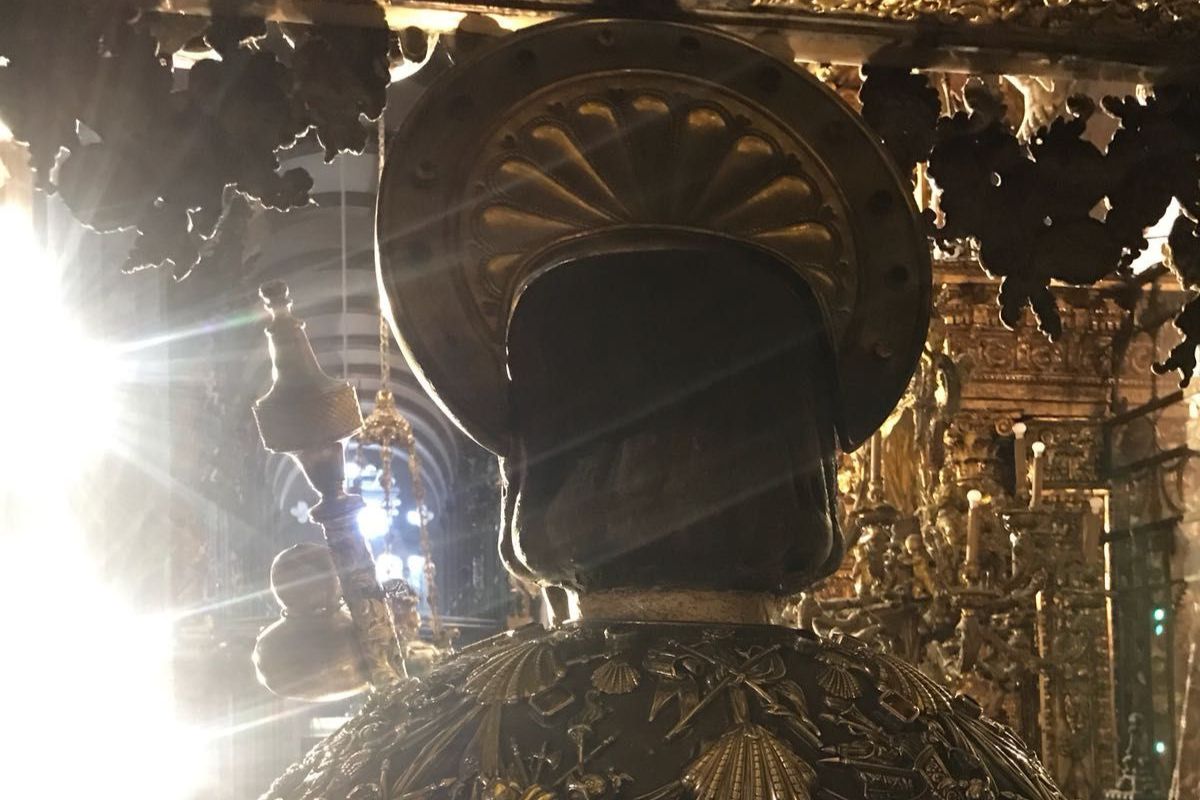There are many traditions and rites performed by pilgrims on the Camino de Santiago, such as leaving stones, crosses, mementos, phrases, or images on milestones. Not only during but also at the end of the Camino, such as shedding old clothes, burning boots, and celebrating the arrival by embracing each other. And speaking of hugs: January 21 is International Hug Day, and in Compostela, one of the oldest, most symbolic, and emotional rituals for pilgrims is the embrace of the Apostle Saint James. In this article, we will delve into the meaning of this essential rite and tradition upon completing any of the Jacobean routes.
Where is the statue of the embrace to the Apostle Santiago located in the Cathedral?
Inside the Santiago Cathedral, there are many representations in painting and sculpture of Santiago, which also has three iconographic versions: Apostle, Pilgrim, and Soldier. The one of interest, the statue of the embrace to Santiago, is his version as a Pilgrim. This image is located behind the main altar of the Santiago de Compostela Cathedral, specifically in the space called the camarín (small chamber or chapel).
This room, the camarín, is raised above the crypt and Tomb of the Apostle, and it is an 18th-century Baroque work. It has two doors on both sides, each with its own staircase, one being the entrance and the other the exit. Generally, pilgrims and visitors to the Cathedral make the ritual journey of visiting the Tomb of the Apostle and then embracing Santiago.

Altar of the Santiago Cathedral, behind which is the camarín for hugging the Apostle Santiago
The appearance of the statue
The statue of the Apostle Santiago is an impressive work of art. It is a polychrome stone sculpture of Santiago seated in his Pilgrim version. Consequently, the image wears the pilgrim’s cloak, a nimbus adorned with the scallop shell, and the pilgrim’s cane.
As for his face, the image conveys a sense of serenity and welcome, inviting pilgrims to fulfill the rite of hugging the Apostle Santiago. The feeling it provokes is one of closeness and friendship, so much so that many pilgrims whisper and briefly converse with him, likely in a spirit of gratitude.
Origin and history of hugging the Apostle Santiago
It is recorded that this rite has been carried out since the early 13th century, once the Cathedral’s construction was completed. The authorship of the sculpture is attributed to the students of the workshop of Master Mateo, author of the spectacular Portico of Glory. The origin of this act is motivated by the desire to feel closer to the Apostle Santiago. Being able to hugging the Apostle Santiago and enjoy a close physical and intimate proximity to him is the best way to venerate him.
The statue was subject to additions and replacements later on, as a consequence of the wear it suffered after millions of pilgrim embraces. This is the case of the silver cloak with precious stones and Jacobean and military symbols embedded, which also suffered thefts of some of its pieces. This cloak, dated 1704, was replaced by a replica in 2004, and today the original can be viewed in the Cathedral Museum. In addition to the cloak, the nimbus, the silver throne, and the staff were also added in the 18th century.
What does embracing the Apostle Santiago symbolize?
Upon arriving at the Plaza del Obradoiro, every pilgrim enters the Cathedral and visits the Tomb of Santiago, the original purpose of the Jacobean pilgrimage. However, and for many centuries, the rite of embracing the statue of Santiago makes the experience of venerating the Apostle more tangible.

A pilgrim ready to embrace the Apostle Santiago
This gesture has a profound meaning for pilgrims from all over the world, whether the purpose of the pilgrimage is religious or not. Embracing the Apostle Santiago represents not only the end of a long physical journey but also a unique spiritual encounter.
The act of embracing Saint James is more than a simple physical gesture: it is a moment charged with emotion and meaning. For many, it represents the culmination of a transformative journey, a way of thanking for the experiences lived and the lessons learned along the Way. It is also a moment of personal reflection, spiritual connection, and feeling the presence and support of the Apostle.
Hugging the Apostle Santiago symbolizes, in short, overcoming challenges, perseverance, and achieving a long and often difficult goal. It is an act of faith and devotion, strengthening the connection between the pilgrim and the Jacobean tradition, and it is and will be an unforgettable moment in the life of every pilgrim.















Leave A Comment